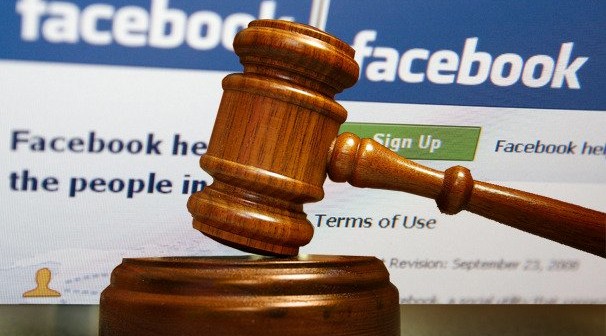- Introduction
On September 30th, 2021, the Brazilian Chamber of Deputies approved the Brazilian Legal Framework for Artificial Intelligence (Marco Legal da Inteligência Artificial, Bill no. 21/2020), a 10 article bill that intends to regulate the development and use of AI technology within Brazil. Although the bill can still be modified in the Senate, as it stands, there are some controversial provisions. Chiefly, there is among them the system of protections, safeguards, and guarantees, which seem to fail to implement significant concerns raised by civil society groups and representatives. This essay will introduce some of the proposed regulation issues contextualizing them with Brazil’s past multistakeholder experiences in regulating new technologies.
- Multistakeholderism and the Regulation of AI
In the 2000s, Brazil was at the forefront of establishing innovative practices towards regulating new technologies. The concept of using the internet to deliberate about the network was essential to domestically encapsulate the emerging multistakeholder participation approach – present in the definition of Internet Governance produced during the World Summit on Information Society in 2005[1]. The drafting of the Brazilian Internet Bill of Rights (“Marco Civil da Internet”), which provided a very open, public, and multistakeholder participation and consultation process, is an important example of this historic commitment.
Although not something unusual in Brazilian legislative practice, the deliberation procedure of the Marco Civil, using Web 2.0 instruments, allowed for transparency and dialogue among the stakeholders in the negotiations that produced the final legislation.[2] Nowadays, the Marco Civil is recognized as one of the cornerstones of the Brazilian legal landscape concerning issues related to the computational network. It also stands as a significant example of the commitment, from a nation-state perspective, to engage in a genuinely democratic debate aimed at producing a shared solution for an all-encompassing issue and shines as an important international example.
Through this multistakeholder perspective, the regulation of the internet was able to take into account the necessary trade-offs between different stakeholders’ particular interests, which tend to lead to broader acceptance and efficacy.[3] This multistakeholder approach was then used extensively in other critical legislations in the country, serving as an example for the deliberations concerning the General Data Protection Legislation, promulgated in 2018 (Lei no. 13.709), as well as the reform of the Brazilian Civil Procedure Code in 2015.
Contrastingly, regarding the proposed regulation of AI, the country did not see a similar deliberative effort. In 2019, the Ministry for Science, Technology, Innovation, and Communications launched a public consultation focusing on raising contributions to define a Brazilian AI strategy. Although the public consultation allowed for many representatives of different stakeholders to voice their concerns and opinions,[4] the final document refrained from establishing a comprehensive list of tasks and strategies for implementing AI solutions in the country and its regulation. Additionally, although the Executive’s initiative raised engaging contributions from the civil society and the academic sectors, the final AI Strategy failed to incorporate many of the critical propositions made, invariably promoting a limited framework. The legislative proposal for the AI regulation in the Brazilian Congress has, up to now, not followed a similar multistakeholder approach.
- The Draft Bill 21/2020
The limitations of the AI Strategy published in July 2021 can also be perceived from the bill approved in the lower house of the Brazilian Congress, the Chamber of Deputies.
The bill showcases some deficiencies that could have been the starting point for a more extensive debate within Brazilian society. For example, instead of differentiating the levels of risk different AI technologies may pose, as has been proposed in other regulatory initiatives, such as the proposed AI Act of the European Union, the bill generally prescribes a risk-based approach towards the development of AI solutions without taking into account the multiple scenarios in which this technology can be employed.
Specifically concerning the liability regime structured in the bill, one can perceive an attempt to establish a general system of subjective liability, taking into account the assessment of the «effective participation of those agents, the specific damage that one wishes to prevent or remediate, and how those agents can demonstrate adherence to the applicable norms through reasonable actions in accordance with international standards». This provision contrasts with the broader landscape of Brazilian tort law and provides a one-shoe-fits-all solution that may not be the most suitable for the regulation of AI. For example, article 6, s. III of the bill postulates that AI solutions must be developed through a risk-based approach but refrains from providing differentiation between the categories of risk that could guide the developers and users of AI solutions. Adopting a risk approach also alludes to the consideration that AI solutions are inherently risky, which under the logic of article 927 of the Brazilian Civil Code would imply a system of strict liability instead of a subjective one. Nevertheless, the third paragraph of the article establishes, as an exception, a system of strict liability when AI is implemented in consumer relations, following the Brazilian framework of consumer protection (article 14 of the Consumer Protection Code). Beyond consumer relations, the Brazilian Constitution also defines a system of strict liability for the actions pertaining the public administration (article 37, §6 of the Brazilian Constitution), which implies that the use of AI in judicial and legislative proceedings would also lead to a strict liability framework in contrast to the provisions of the subjective framework proposed on the bill.
Furthermore, in article 4, the bill establishes non-discrimination, plurality, and respect to human rights as one of the founding tenets of the AI regulation. Likewise, article 5 establishes that non-discrimination should be implemented to avoid discriminatory AI solutions. Equality established as a principle is just one of the necessary prescriptions that should be implemented in the regulation of AI. In a highly diverse, multicultural, and multiethnic society, as in Brazil, equality hinges on the effective inclusion of the plural representatives in all instances of deliberation and decision-making. Considering this technology’s capacity to cause harm and replicate discriminatory practices, the focus of the regulation should also be on promoting effective inclusion in the development, application, and supervision of AI systems.
Another issue related to the multifaceted reality of Brazilian social and economic background lies in the legislative proposal being silent on the underlying issue that hinders the development of AI technologies in the region. As in other countries from the global South, Brazil is faced with a deficit in infrastructure that could be key in democratizing the benefits of the expansion of AI. As summarised in the OECD ‘Going Digital in Brazil’ report, the country still needs to improve access to reliable, affordable, and high-quality internet, in addition to an acceleration of the improvement of digital skills by civil society.[5] These improvements rely on a coherent regulatory framework capable of fomenting healthy competition in the field of AI while instigating further research and capacity-building.
The Brazilian Senate can entirely modify the approved bill. The upper house of the Brazilian Congress will engage with the matter taking into account other two legislative proposals (bills no. 5.051/2019 and 872/2021) and has already established a commission with the mandate to assist in its efforts to regulate AI and provide a new bill for the appraisal of Congress. Unfortunately, a similar trend of unilaterality and lack of diversity is still perceived in the Senate’s effort. The established commission has already been criticized for its lack of diversity and representation, with the majority of its 18 members being male and caucasian. The lack of jurists from diverse cultural and regional backgrounds significantly impacts the commission’s ability to engage in the issues concerning those underrepresented groups.
- (Re)Engaging with Multistakeholderism in AI Regulation
A multistakeholder deliberation can lead to more efficient results and generate further engagement with the broader society and the many interests involved in using AI solutions. Although the Executive has somewhat engaged in a multistakeholder approach through its consultation process, the final strategy did not incorporate many of the contributions made from the multistakeholder process.
Similarly, the Chamber of Deputies’ approved bill serves as an engaging case study that showcases the limitations of approaching the regulation of new technologies solely through a top-down approach. The matter stands for appraisal and deliberation in the Brazilian Senate and its established commission. Although, as it is composed, the commission replicates the deficiencies displayed in the lower house, not engaging with more substantial and radical inclusion, without opening the deliberation over AI and its regulation to more diverse representatives of the civil society and other important stakeholders, such as the private sector, academia and the technical community.
© Cover Image: Uri Rosenheck
__________________________________
[1] ”Internet governance is the development and application by Governments, the private sector, and civil society, in their respective roles, of shared principles, norms, rules, decision-making procedures, and programmes that shape the evolution and use of the internet”, Working Group on Internet Governance, Report of the Working Group on Internet Governance, in wgig.org, 2005.
[2] C.A. Souza – F. Steibel – R. Lemos, Notes on the creation and impacts of Brazil’s Internet Bill of Rights, in The Theory and Practice of Legislation, 5-1, 2017, 73-94.
[3] The regulation of spam in Brazil serves as an illustration of the efficacy of the multistakeholder decision model. While the initial efforts from the Brazilian Internet Steering Committee rested on technical aspects of limiting spam, the regulation focused on the policy debates concerned with consumer rights, freedom of speech, and commercial competition. The inclusion of other stakeholders (such as telecommunications companies and ISPs) allowed for the voluntary adoption of those actors in blocking Port 25/TCP, allowing the necessary coordination and collaboration between stakeholders towards combating spam. See more at: R. Lemos. et al, Fighting Spam the Multistakeholder Way – A Case Study on the Port 25/TCP Management in the Brazilian Internet, in Internet Governance Case Studies of the Network of Centers, 2015.
[4] According to the analyses of the Institute for Technology and Society in Rio de Janeiro, there were a total of 908 contributions ranging from government representatives, individual submissions, the private sector, civil society, and academia. See ITS, Estratégia Brasileira de Inteligência Artificial, in itsrio.org.
[5] OECD, OECD Reviews of Digital Transformation: Going Digital in Brazil, in oecd-ilibrary.org, 26 October 2020.



